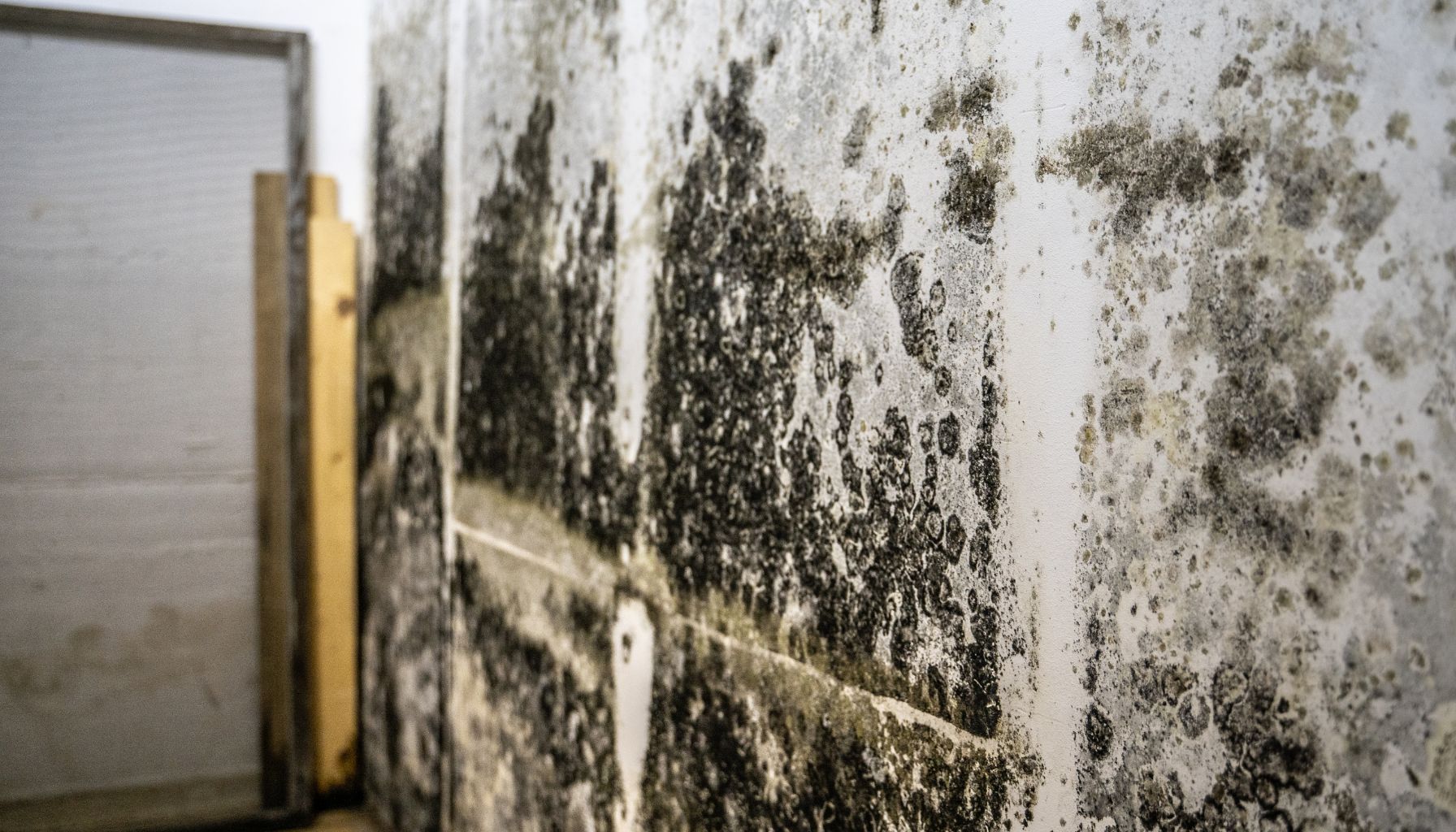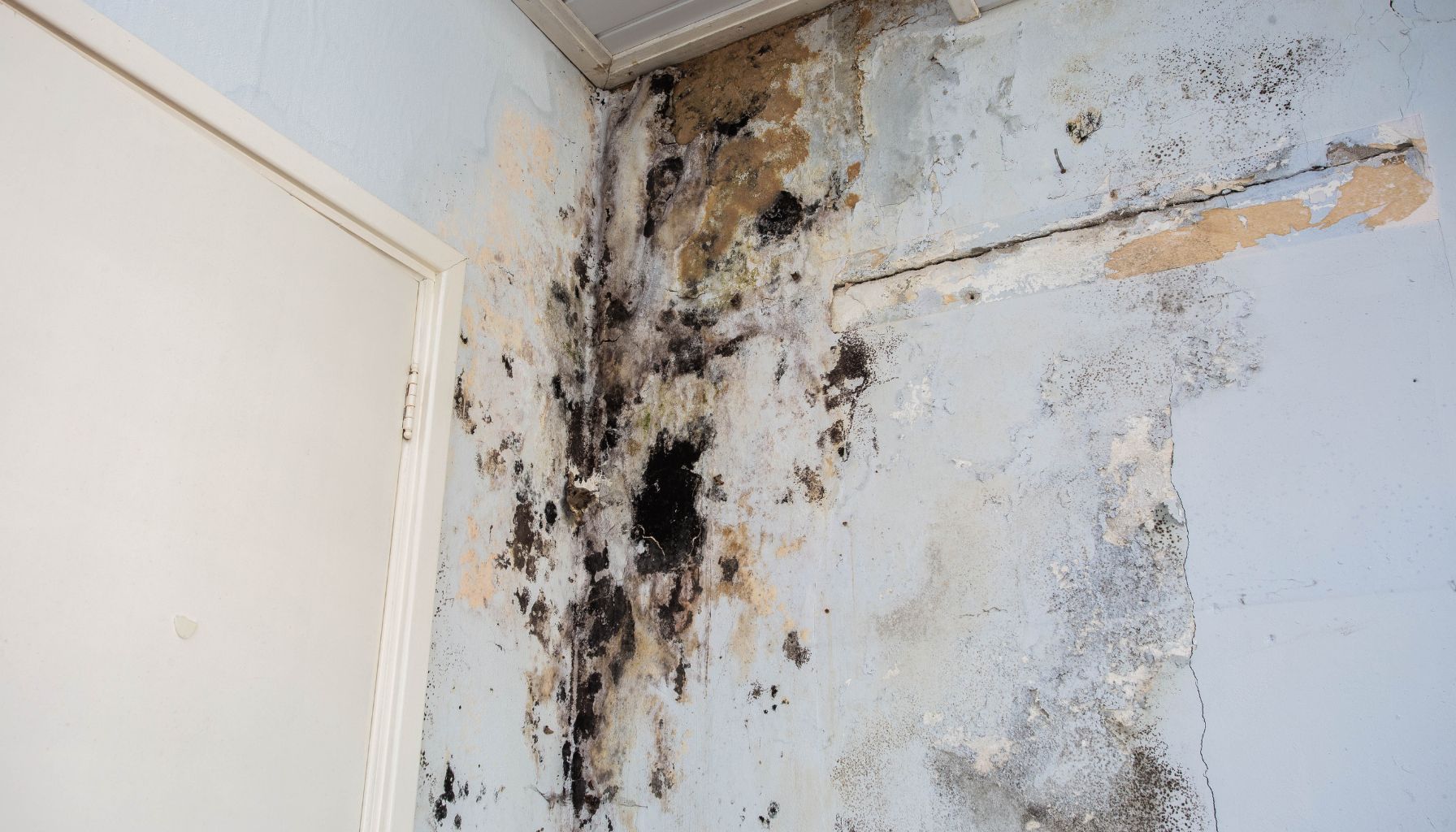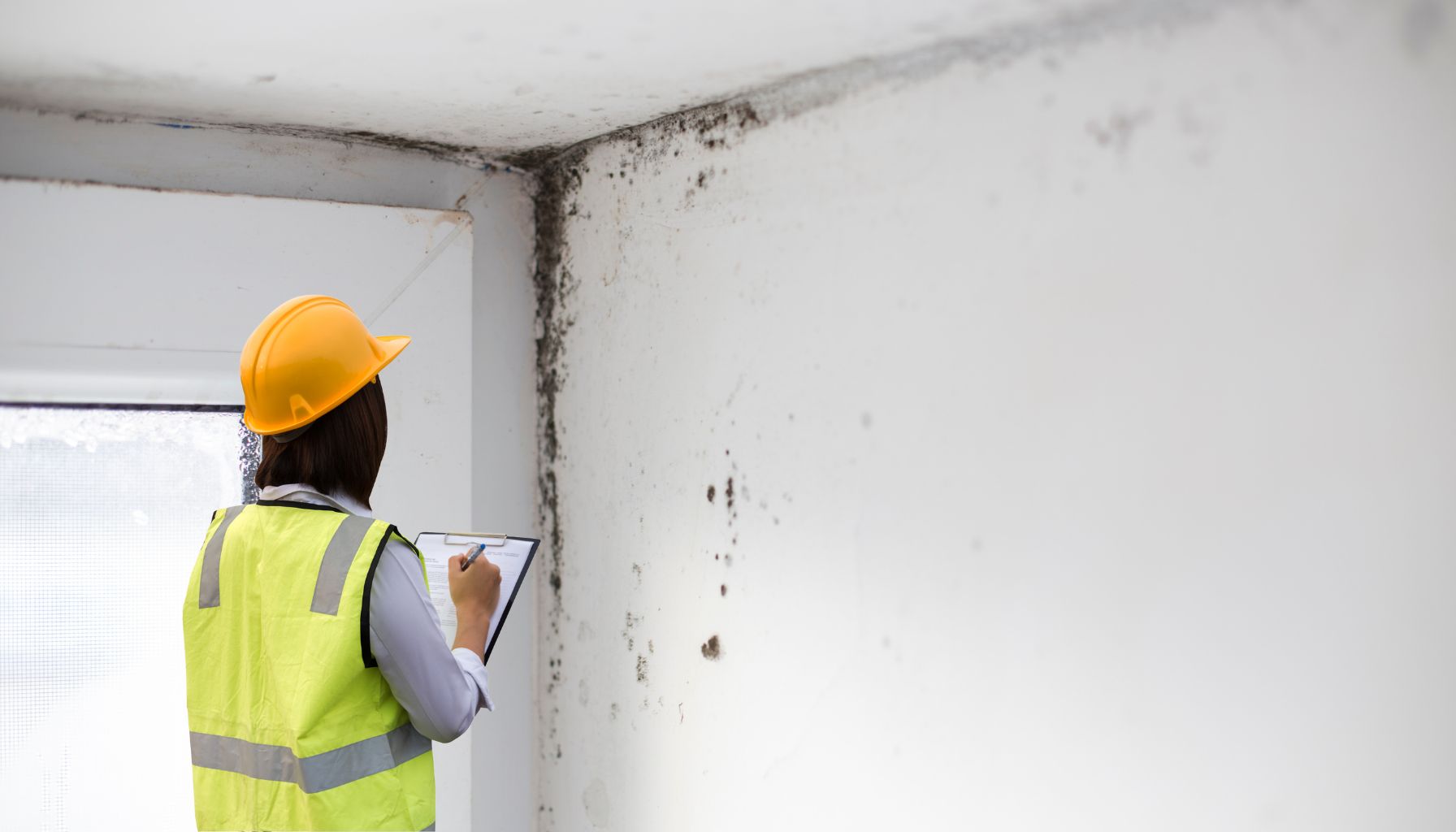The importance of moisture control in preventing mold
In order to protect your home and the health of your loved ones, it is crucial to understand the role of moisture control in preventing mold damage.
Mold is a common problem that can lead to various health issues and costly repairs if left unaddressed. By managing moisture levels in your living space, you can effectively combat the growth of mold and create a healthier environment for everyone. In this article, we will explore the importance of moisture control and provide practical tips to prevent mold damage in your home.
Understanding Mold and Its Growth
What is Mold?
Mold is a type of fungus that grows in damp, dark, and poorly ventilated areas. It is made up of microscopic spores that float in the air and can settle on surfaces. Mold can come in various colors, including black, green, or brown. It thrives in environments with high humidity levels and feeds on organic materials such as wood, paper, or fabric.
Conditions that Favor Mold Growth
Mold requires specific conditions to grow and thrive. The main factors that contribute to mold growth are moisture, warmth, and a food source. Moisture is particularly critical as it enables mold spores to germinate and develop into visible colonies. This is why mold is commonly found in areas with water damage, leaks, or high humidity levels.
The Life Cycle of Mold
Mold goes through a life cycle consisting of several stages: spore formation, germination, hyphae development, spore production, and dispersion. Mold spores are released into the air and can travel to different locations, settling onto surfaces. When the conditions are right, the spores will germinate and grow into hyphae, which are long, branching structures. As the hyphae continue to grow, they produce more spores, leading to the spread of mold.

Types of Mold Common in Homes
There are several types of mold that are commonly found in residential environments. Some examples include:
- Stachybotrys chartarum (also known as black mold) – This type of mold is typically black or dark green and can release mycotoxins. It is often found in areas with constant moisture, such as bathrooms or basements.
- Aspergillus – This type of mold is frequently found on food and can cause respiratory issues when inhaled.
- Penicillium – This mold is known for its blue or green fuzzy appearance and is often found on water-damaged materials, including wallpaper or carpet.
- Cladosporium – This mold can grow on both indoor and outdoor surfaces, including wood, textiles, and plants. It can trigger allergies and respiratory problems.
Understanding the types of mold commonly found in homes can help homeowners identify and address mold issues promptly.
The Relationship between Moisture and Mold
Why does Mold thrive in Moist Conditions?
Moisture is a crucial factor in mold growth. Mold spores require a moist environment to germinate and start growing into visible colonies. When moisture levels are high, whether from leaks, humidity, or water damage, the conditions become favorable for mold to thrive. Without proper moisture control, mold can quickly spread and cause significant damage to both the structure of a building and the health of its occupants.
The Role of Humidity in Mold Growth
Humidity levels play a significant role in mold growth. High humidity provides the ideal conditions for mold spores to germinate and proliferate. Indoor humidity levels above 60% can promote mold growth. It is important to monitor and control humidity levels, especially in areas prone to moisture accumulation, such as bathrooms or basements.
How Mold Uses Moisture to Reproduce
Mold utilizes moisture as part of its reproductive process. When mold spores encounter a damp surface, they absorb moisture and begin the germination process. This process allows them to produce hyphae, which are the branching structures responsible for mold growth. Moisture acts as a catalyst for mold reproduction, allowing it to spread and colonize different surfaces.
Effects of Water Damage on Mold Growth
Water damage, whether from leaks, floods, or excessive humidity, can have a significant impact on mold growth. When building materials or belongings are exposed to water, moisture is trapped, creating an environment conducive to mold growth. If water damage is not promptly addressed and the affected areas are not properly dried, mold can start to grow within 24 to 48 hours. This can lead to severe structural damage and pose health risks to the occupants of the building.
The Dangers of Mold in Residential and Commercial Buildings
Health Risks Associated with Mold Exposure
Exposure to mold can have adverse health effects, particularly for individuals with respiratory conditions, allergies, or weakened immune systems. Some common health risks associated with mold exposure include:
- Allergic reactions (sneezing, coughing, watery eyes)
- Asthma exacerbation
- Respiratory infections
- Sinusitis
- Skin irritation or rashes
- Headaches or migraines
- Fatigue
People who are exposed to mold on a regular basis may develop long-term health issues. It is essential to address mold problems promptly to protect the health and well-being of occupants.

Structural Damage Caused by Mold
In addition to health risks, mold can also cause significant damage to the structure of residential and commercial buildings. Mold colonies can grow on porous materials such as drywall, wood, or carpet, leading to the degradation of these materials over time. As the mold spreads and consumes the organic matter, it weakens the structural integrity of the building. This can result in costly repairs and, in severe cases, the need for complete remediation or reconstruction.
The Economic Impact of Mold Damage
Mold damage can have a substantial economic impact on both homeowners and business owners. The costs associated with mold remediation, repairs, and potential legal liabilities can add up quickly. Additionally, mold issues can lead to decreased property value, difficulty in selling or renting affected properties, and increased insurance premiums. By implementing proper moisture control measures and addressing mold problems early on, individuals can avoid the financial burden of extensive damage and repairs.
How Mold Affects Indoor Air Quality
Mold growth can have a significant impact on indoor air quality. As mold releases spores into the air, occupants can inhale these spores, leading to respiratory issues and allergic reactions. Additionally, mold can produce volatile organic compounds (VOCs), which can cause odors and irritate the respiratory system. Poor indoor air quality can affect overall health and well-being. By controlling moisture levels and preventing mold growth, the indoor air quality can be maintained at a healthier level.
The Importance of Moisture Control in Mold Prevention
Breaking the Mold Life Cycle through Moisture Control
Moisture control is crucial in preventing mold growth and breaking the mold life cycle. By eliminating or reducing excessive moisture in the indoor environment, the conditions necessary for mold growth can be disrupted. This includes addressing leaks, improving ventilation, and implementing proper drying techniques after water damage or flooding. By breaking the mold life cycle, the risk of mold infestations can be significantly reduced.
Relationship between Moisture Control and Mold Spore Reduction
Moisture control plays a critical role in reducing mold spore levels in indoor environments. Mold spores are a common allergen and can be present even without visible mold growth. By implementing moisture control measures such as maintaining appropriate humidity levels, fixing leaks promptly, and properly ventilating spaces prone to moisture accumulation, the number of mold spores in the air can be minimized. This can help improve indoor air quality and reduce the risk of adverse health effects associated with mold exposure.
Economic Advantages of Mold Prevention through Moisture Control
Implementing moisture control measures as a preventive measure against mold can have significant economic advantages. By investing in moisture control upfront, individuals can avoid the costly expenses of mold remediation and repairs. Furthermore, preventing mold growth can help maintain property value and prevent potential legal issues related to mold damage. The money saved by proactively addressing moisture issues can outweigh the costs associated with mold-related damages in the long run.
Methods of Controlling Indoor Moisture Levels
Using Dehumidifiers for Moisture Control
Dehumidifiers are effective tools for controlling indoor moisture levels, particularly in areas with high humidity. These devices work by removing excess moisture from the air, lowering humidity levels, and creating an environment that is unfavorable for mold growth. Dehumidifiers are commonly used in basements, bathrooms, and other spaces prone to moisture accumulation. It is important to choose the right size and capacity dehumidifier for the specific area to effectively control indoor moisture levels.

Importance of Ventilation in Reducing Indoor Humidity
Proper ventilation is crucial in reducing indoor humidity levels and preventing mold growth. Good air circulation helps to remove excess moisture from the air and promotes faster drying of damp surfaces. It is important to ensure that ventilation systems, such as exhaust fans in bathrooms or range hoods in kitchens, are functioning properly to effectively remove moisture. Additionally, opening windows and doors to allow for natural airflow can aid in reducing indoor humidity levels.
Role of Air Conditioning in Controlling Indoor Moisture
Air conditioning systems play a significant role in moisture control in indoor environments. When air is cooled by an air conditioning unit, moisture in the air condenses and is collected in a drain pan or removed through a condensate line. This helps to reduce humidity levels and create a drier indoor environment, inhibiting mold growth. Regular maintenance of air conditioning systems, including cleaning filters and inspecting drain lines, is essential to ensure proper functioning and moisture control.
Maintaining Indoor Plants for Moisture Absorption
Indoor plants can assist in absorbing excess moisture from the air and aid in moisture control. Plants naturally release moisture through a process called transpiration, which can help to regulate humidity levels. However, it is important to strike a balance, as overwatering plants can create excessive moisture, promoting mold growth. Proper care and maintenance of indoor plants, including not overwatering and ensuring good drainage, can help to create a healthier indoor environment.
Proper Building and Construction Practices for Moisture Control
Choosing Mold-Resistant Building Materials
Selecting mold-resistant building materials is an important step in preventing mold growth. Many materials, such as drywall, insulation, and flooring, now have mold-resistant options available. These materials are designed to resist moisture absorption and inhibit mold growth. When constructing or renovating a building, it is advisable to use these mold-resistant materials in areas prone to moisture, such as bathrooms, basements, or kitchens.
Importance of Proper Insulation in Preventing Condensation
Proper insulation plays a crucial role in preventing condensation and controlling moisture levels. Insulation helps to maintain consistent indoor temperatures, reducing the likelihood of condensation forming on surfaces. When warm, humid air comes into contact with cooler surfaces, condensation can occur, creating an environment favorable for mold growth. Adequate insulation, particularly in attics and walls, can help prevent condensation and mitigate the risk of mold formation.
Role of Good Roofing and Plumbing to Prevent Leaks
Good upkeep of the building’s roofing and plumbing systems is essential in preventing leaks and subsequent mold growth. Regular inspections and maintenance of the roof can help identify any vulnerabilities that may lead to water infiltration. Additionally, plumbing systems should be regularly checked for leaks or drips, as even minor water damage can create a breeding ground for mold. By promptly addressing any roofing or plumbing issues, the risk of mold growth can be minimized.
Strategies for Detecting and Treating Mold in Buildings
Early Signs of Mold Growth
Early detection of mold growth is crucial in preventing extensive damage. Some common signs of mold presence include:
- Musty or earthy odors
- Visible discoloration on walls, ceilings, or floors
- Peeling or bubbling paint or wallpaper
- Allergic reactions (sneezing, coughing, watery eyes)
- Persistent moisture or humidity issues in specific areas
If any of these signs are observed, it is important to conduct a thorough inspection and address the mold problem promptly.

Professional Mold Inspections and Assessments
Professional mold inspections and assessments can provide a comprehensive evaluation of mold issues in a building. Mold inspectors are trained to identify mold growth, locate its source, and assess the extent of the infestation. They can also provide recommendations for remediation and preventive measures. Professional assessments are particularly important in cases of extensive mold growth or if there are concerns about potential health risks.
DIY Mold Testing Kits
Do-it-yourself (DIY) mold testing kits are also available for individuals who want to assess the presence of mold on their own. These kits typically include a swab or air sampling equipment and instructions for collecting samples. However, it is important to note that DIY mold testing kits may not provide the same level of accuracy as professional assessments. If there are concerns about potential mold issues, it is recommended to consult with a professional mold inspector.
Remediation Techniques for Mold Infestations
Mold remediation involves removing the mold and addressing the underlying moisture problem. The remediation process may include:
- Containment: Creating barriers to prevent the spread of mold spores to unaffected areas.
- Removal: Physically removing the mold-infested materials, such as drywall or carpet, and properly disposing of them.
- Cleaning: Thoroughly cleaning surfaces and treating them with antimicrobial solutions to prevent future mold growth.
- Drying: Implementing proper drying techniques to eliminate excess moisture and prevent further mold growth.
- Prevention: Addressing the underlying moisture issue to prevent future mold infestations.
Mold remediation should be carried out by trained professionals to ensure it is done safely and effectively.
Maintaining Dry Environments in Especially Vulnerable Areas
Preventing Moisture Buildup in Basements and Attics
Basements and attics are particularly vulnerable to moisture buildup, making them common areas for mold growth. To prevent moisture issues, it is important to:
- Ensure proper insulation and ventilation in these areas.
- Seal any cracks or gaps that could allow water infiltration.
- Use dehumidifiers or fans to control humidity levels.
- Regularly inspect for signs of leaks or water damage.
By addressing moisture issues promptly and implementing preventive measures, the risk of mold growth in basements and attics can be significantly reduced.
Managing Moisture in Kitchens and Bathrooms
Kitchens and bathrooms are areas prone to high moisture levels due to daily activities such as cooking, bathing, and washing. To manage moisture effectively and prevent mold growth in these areas, it is important to:
- Use exhaust fans or range hoods to remove steam and humidity.
- Wipe down surfaces and keep them dry after use.
- Fix any leaks in plumbing fixtures promptly.
- Ensure proper ventilation to allow for airflow and moisture reduction.
By practicing good moisture management in kitchens and bathrooms, the risk of mold growth can be minimized.
Drying Techniques for Flooded Rooms
In the event of a flood or water damage, it is crucial to dry affected rooms thoroughly to prevent mold growth. Some important drying techniques include:
- Removing standing water with pumps or wet/dry vacuums.
- Using fans or dehumidifiers to circulate air and absorb moisture.
- Removing wet carpeting or upholstery to prevent further moisture retention.
- Monitoring humidity levels and ensuring adequate ventilation.
Prompt and thorough drying is essential to prevent mold growth and minimize damage after a flood or water-related incident.
The Role of Professional Mold and Moisture Control Services
When to Consult with a Professional Service
Professional mold and moisture control services should be consulted in the following situations:
- Extensive mold growth covering large areas.
- Suspected or known health issues related to mold exposure.
- Difficulty in identifying the source of moisture or mold infestation.
- Complex or ongoing moisture issues.
- Need for professional mold inspections or assessments.
Trained professionals have the expertise, equipment, and experience to effectively address mold and moisture problems in residential and commercial buildings.
What to Expect During a Professional Mold and Moisture Assessment
During a professional mold and moisture assessment, the following steps may be taken:
- Visual inspection of the property to identify visible mold and areas prone to moisture-related issues.
- Measurement of moisture levels using specialized tools such as moisture meters or thermal imaging cameras.
- Sampling of surfaces or air to test for the presence of mold spores.
- Identification of the source(s) of moisture and recommendations for remediation and moisture control.
A professional assessment provides a comprehensive evaluation of mold and moisture issues, guiding the appropriate course of action for remediation and prevention.

Ongoing Maintenance Services for Mold and Moisture Control
Professional mold and moisture control services can provide ongoing maintenance to ensure long-term mold prevention. These services may include:
- Regular inspection of the property to identify and address any potential moisture issues.
- Monitoring and maintenance of moisture control systems such as dehumidifiers or ventilation systems.
- Prompt response to any signs of water damage or leaks.
- Education and guidance on best practices for mold prevention and moisture control.
Ongoing maintenance services can help individuals maintain a mold-free environment and minimize the risk of future mold growth.
Preventive Measures and Long-term Strategies for Mold Control
Educating Residents and Occupants about the Risks of Mold
Educating residents and occupants about the risks of mold is essential for preventing and addressing mold issues. By providing information about the health risks, structural damage, and economic implications of mold, individuals can become more proactive in moisture control and mold prevention. Promoting awareness through educational materials, workshops, or online resources can help empower individuals to take necessary measures to prevent mold growth.
Developing a Regular Cleaning and Maintenance Schedule
Developing a regular cleaning and maintenance schedule is an effective long-term strategy for mold control. This includes:
- Regularly cleaning and wiping down surfaces to remove any mold spores or moisture.
- Routinely inspecting and addressing any signs of leaks or water damage.
- Conducting periodic checks of ventilation systems and dehumidifiers to ensure proper functioning.
- Implementing proper storage and organization practices to prevent clutter and moisture accumulation.
By incorporating these tasks into a regular schedule, individuals can maintain a clean and mold-free environment.
Investing in Mold-Resistant Products
Investing in mold-resistant products can be a wise preventive measure against mold growth. Mold-resistant paints, coatings, and sealants can help inhibit mold growth on surfaces. Additionally, using mold-resistant building materials during construction or renovation can reduce the likelihood of mold problems. These products are specifically designed to resist moisture absorption and discourage mold growth, contributing to long-term mold control.
Importance of Regular Building Inspections
Regular building inspections are crucial in identifying and addressing potential moisture issues and mold growth. By conducting routine inspections, individuals can detect leaks, water damage, or moisture-prone areas before they lead to mold problems. Inspections should encompass areas such as roofs, plumbing systems, ventilation, and areas with high humidity levels. Timely detection and prompt action can prevent extensive mold damage and mitigate associated risks.
In conclusion, understanding the role of moisture control in preventing mold damage is essential for maintaining a healthy and mold-free environment. By addressing moisture issues, implementing preventive measures, and seeking professional assistance when needed, individuals can effectively control mold growth, protect their property, and safeguard the health and well-being of their occupants. Proper moisture control practices and long-term strategies are key to combating mold and ensuring a safe living or working environment.



